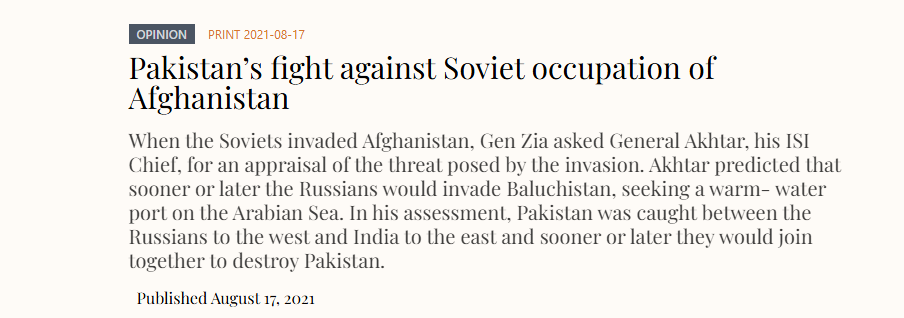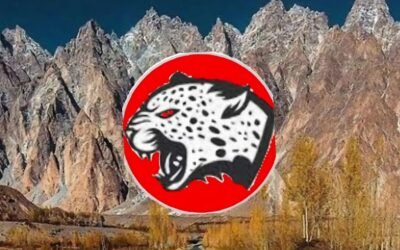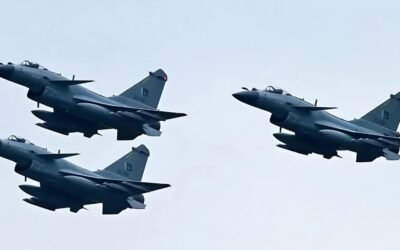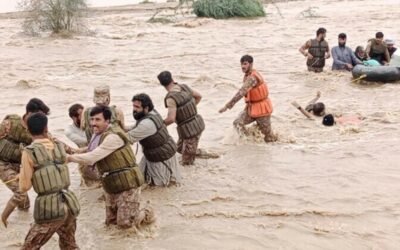Pakistan as the Frontline of Operation Cyclone
Strategic dynamics in South Asia were changed by the Soviet invasion of Afghanistan in December 1979. Pakistan, under President General Zia-ul-Haq, became the epicenter of international resistance. The CIA-sponsored program, Operation Cyclone, relied extensively on the Inter-Services Intelligence (ISI) in Pakistan. Pakistan was used to ship funds, weapons, and equipment on behalf of the U.S. and Saudi Arabia. They did not directly run the resistance, though. All the ground operations were handled by the ISI.
Pakistan continued to exercise operational control. The CIA agreed that there would be no Americans to enter Afghanistan. Rather, the ISI camp trained Afghan fighters in the secret camps of the tribal belt. During this time, Pakistan emerged as the frontline state against the presence of Soviet troops in Afghanistan. ISI established training camps along the border. Madrassas offered indoctrination. Pakistan developed a system of ideological unity and military coordination. Pakistan turned risk into opportunity by using diplomacy and the coordination of intelligence.
Structuring the Mujahideen: The Peshawar Seven
In Peshawar, hundreds of fragmented Afghan resistance groups were consolidated by ISI. It decided to choose and arm seven parties known as the Peshawar Seven, consisting mainly of Islamist and Pashtun-led groups, and extend to them both arms and other forms of backing. This was composed of Hezb-e-Islamism, which was headed by Gulbuddin Hekmatyar, Jamiat-e-Islamism by Burhanuddin Rabbani, and Ittihad-e-Islamism by Abdul Rasul Sayyaf.
The biggest share of aid went to Hezb-e-Islami, which was strongly supported by Pakistan. This was because of strategic loyalty and ideological compatibility. At the initial stages, the troops of Hekmatyar were successful. ISI also liaised with Tajik fighters of Jamiat to have ethnic representation.
The Peshawar Seven were not only armed groups. Pakistan gained influence in all the Afghan provinces along its western border through these parties. This framework has helped Pakistan to control foreign influence since there was no direct relationship between the CIA and the Mujahideen. From 1974, Pakistan supported the Peshawar Seven group to counter Pashtun nationalism and gain strategic depth in Afghanistan. It favored Pashtun-led rule due to ethnic ties and regional interests. Pakistan’s military used the Afghan jihad to influence internal Afghan politics, backing radical groups like Hekmatyar’s Hezb-i-Islami with major funding from the U.S. and Saudi Arabia. Saudi Arabia, aiming to counter Iran, supported Wahhabi-aligned groups like Sayyaf’s Ittihad-e-Islami and funded madrassas in Pakistan, spreading Salafi ideology across the region.
You May Like To Read: The Tragedy of Gyari Avalanche: No Soldier Left Behind
Strategy and Intelligence: Akhtar and Zia’s Vision
The operational strategy was executed by General Akhtar Abdur Rahman, who was the director of the ISI. He directly reported to Zia‑ul‑Haq. He organized weapons, intelligence, training, and Afghan fighters. The system offered by Akhtar was a success. Akhtar was succeeded by General Hamid Gul in 1987-1989. Gul initiated the operation to capture the city of Jalalabad. He tried to turn to the traditional way of warfare with the siege of a large city. It failed. However, Gul indicated the desire of the ISI to establish a resistance government in Kabul. That aspiration defined Pakistan’s intelligence role in the decade.

Source: Business Recorder
The Forgotten Legacy of 1979-89
The role of Pakistan has been underrated. The Soviet withdrawal of 1989 is credited to American or Saudi pressure. However, it was ISI that provided and coordinated the weapons and manpower and trained 80000-90000 mujahideen. It developed an example of a proxy war that was orderly. It was financed by the CIA and its friends. ISI carried out the implementation. This defined the security structure of Pakistan over the years.
Pakistan was left with a pool of hardcore fighters after Moscow left. Later, former Mujahideen were sent to Kashmir. They were used to serve Pakistani interests in the area. The ISI treats them as its legacy, which should be used locally. This decade established the strength of the intelligence in Pakistan. It developed a secret logistics operation. It facilitated cross-border influence. This has all been left behind by subsequent scandals.
The war with the Soviet Union in Afghanistan influenced the strategic culture of Pakistan considerably. ISI constructed proxy networks to allow military and ideological defense of strategic depth, intelligence warfare, and national goals without open warfare. The given model subsequently influenced Pakistan’s policies on the issue of Kashmir and counterterror policies in the 1990s.
As analysts point out, the state of internal instability was at least a side effect of the ISI proxy model, as it has been the source of strategic victories. These included sectarian violence, radicalization, and unintended blowback produced by militant networks in the 1990s, both highlighting the dangers of proxy dependency over the long term.
Conclusion
Between 1979 and 1989, the Pakistan ISI became a key actor in the world history of the Cold War as it implemented one of the influential proxy campaigns. It took control of supply logistics, it trained foreign fighters, it organized resistance cells, and it dominated intelligence. The risks were incurred by Pakistan. It paved the way to triumph. And it created a legacy of forgotten statecraft. This legacy deserves recognition. It entrenched the place of Pakistan as a strategic player in the South Asia region. It made the ISI a powerful intelligence organization. The Mujahideen pipeline is one of the more significant legacies of the most adventurous decade of Pakistan’s intelligence.







